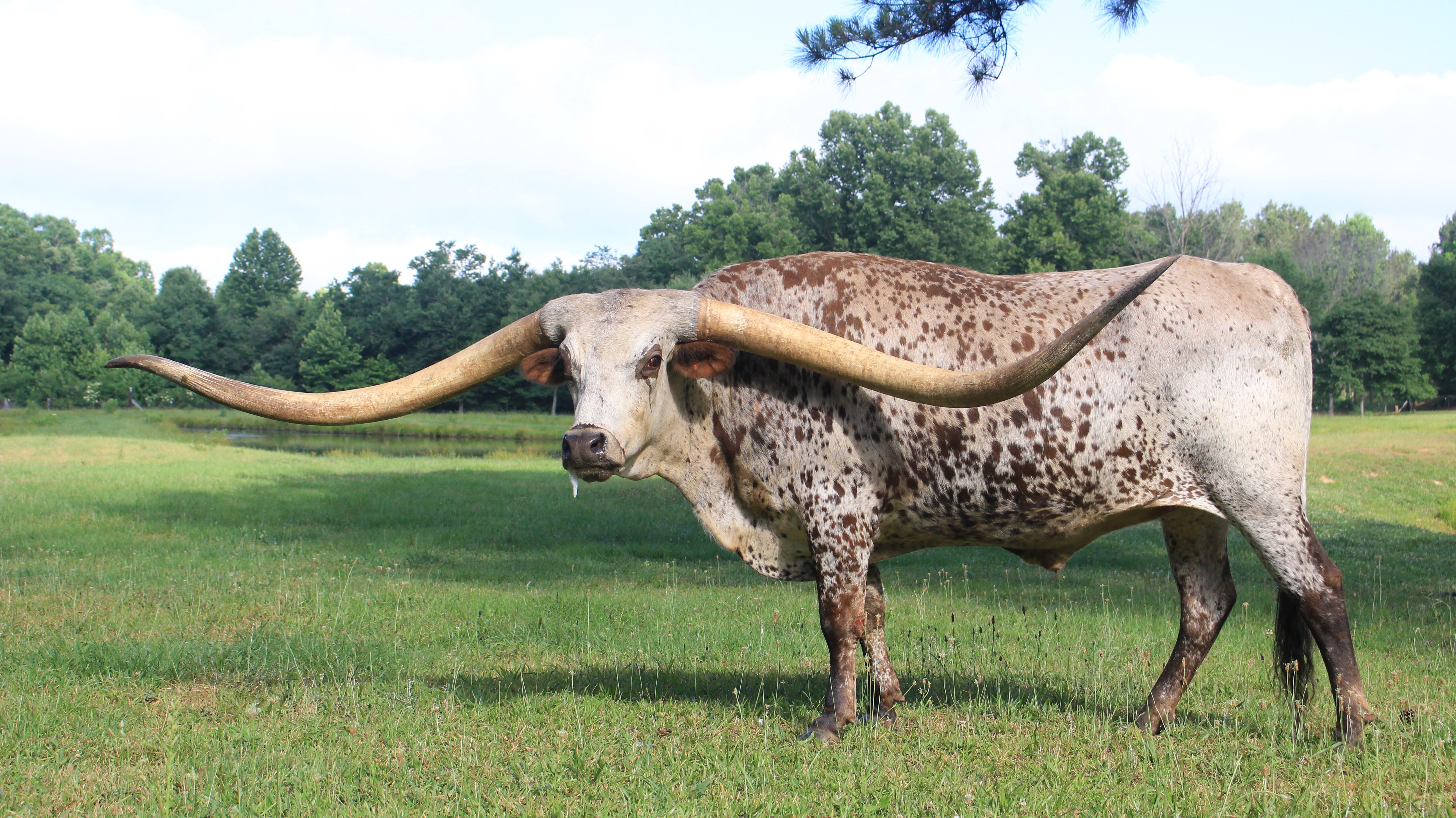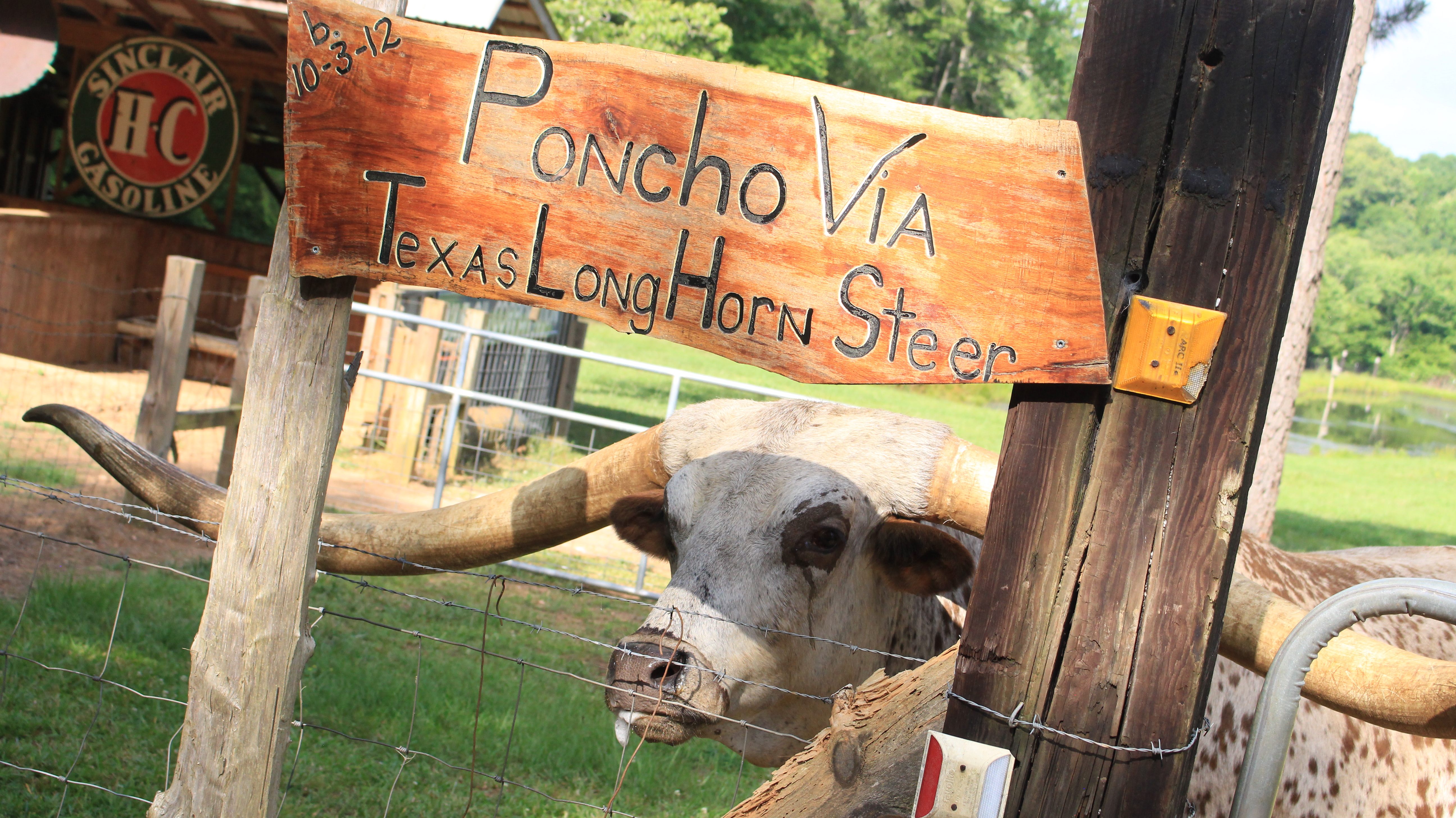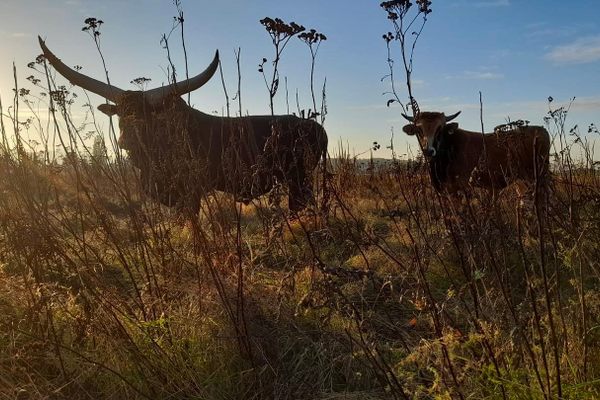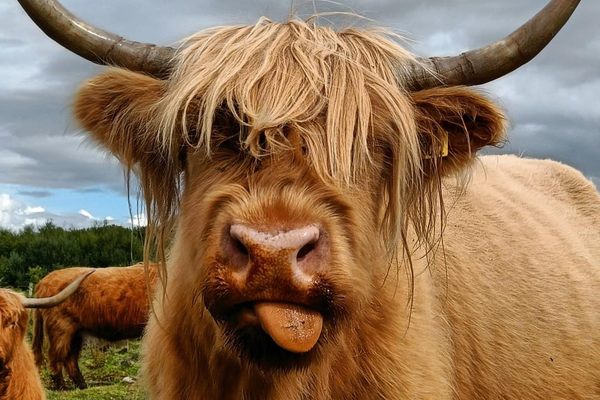Meet Poncho, the Steer Whose Nearly 11-Foot Horns Just Set a World Record
It’s a major turnaround from the longhorn’s close call with extinction a century ago.

In the small town of Goodwater, Alabama, a sweet steer with a healthy appetite for attention and the occasional marshmallow has become a celebrity thanks to his set of extraordinary horns. Six-year-old Texas longhorn Poncho Via was recently welcomed into the Guinness Book of World Records for the largest horn spread on a steer ever documented. According to measurements taken last month, Poncho’s horns span 10 feet and 7.4 inches, about twice the length of a baby grand piano.*
Poncho has been living in Goodwater with the Pope family since he was a calf. His owner, Jeral Pope Sr., first spotted Texas longhorns on a trip out West. He’d never seen anything like them, and knew he had to have one. Soon after, the family ranch welcomed six-month-old Poncho, who, at the time, had a big personality and horns that were nothing to write home about.
When longhorns are calves, says Jeral Sr.’s son, Dennis Pope, there’s no way of knowing what shape the bony protrusions will assume. In fact, it wasn’t until Poncho turned four that he showed signs of growing a spectacularly straight set of horns. From then on, while other steers’ horns twisted upwards, Poncho’s continued to grow out to the side. And they’ve got some more growing to do, says Dennis.
“He’s grown two inches in the last year,” he says, noting that former record-holders have peaked at much older ages, between nine and 15. “There’s a good chance by the time this fellow’s 15, he could add six or eight more inches of horn growth.”

According to Dennis, the record-busting bovine is well-adapted to his lengthy horns, and can still be seen frolicking through the farm, deftly dodging trees. There haven’t been incidents, as many imagine, of pokes, prods, or flat-out clotheslining—with one exception. Family member and farmhand George Jones recalls a time that Poncho swiped a water bottle from his pocket, and began playing with it while Jones gave him a scratch. “That went on for a little while, and I guess a horsefly got on him or something,” he said in an interview with Guinness World Records. “All of a sudden, he turned that head and I went airborne into the pond!”
As Poncho’s horns have continued to grow, so has his posse of visitors. As a people-oriented longhorn, and, in the words of Dennis, “just a big pet,” Poncho has basked in the extra attention. “He has a lot of notoriety from people [on the road] looking at him,” says Dennis. “They stop and feed him apples or pears or watermelon.” His sweet tooth, according to the Guinness World Records, extends to marshmallows, too.
While Texas longhorns are widely revered for their exceedingly straight, long horns, it wasn’t always this way. Descendants of Spanish cattle, longhorns once roamed Texas’s open range en masse. In the 19th century, they were so plentiful in the South that they could sell for as little as a dollar apiece, so cowboys began driving herds north where they’d earn more.
Unlike other breeds, scrappy longhorns could consistently survive the long trek, and became the cow of choice. But when railroads arrived, other, less hardy cattle could be shipped off more easily—long horns took up too much railcar space. At the same time, barbed wire fences began dividing what was once open grazing land. Ranchers opted for other, tastier cattle breeds, and longhorns teetered on the brink of extinction. In the 1920s, they were in greater danger of vanishing than the buffalo.

Then the federal government stepped in. Forest rangers scoured more than 5,000 miles of terrain, rounding up longhorns. In 1927, they assembled a small herd and shipped the mooing crew to the Wichita Mountains Wildlife Refuge in Oklahoma. Soon thereafter, a Texas refuge was established. Eventually, the breed saw a revival centered largely around its distinctive aesthetic flair. Breeders began to tap into longhorns’ potential to become a novelty species, breeding specifically for longer, straighter horns.
Soon enough, the Texas longhorn became a beautiful pet, a novelty—sometimes even a show animal, with the most aesthetically pleasing, long-horned bovines bringing home a prize. But there are many who oppose the idea that long-horned longhorns are longhorns at all. Organizations such as the Livestock Conservancy claim that, because breeders have favored horn length over other traits, crossing them with other breeds for the desired effect, only a few thousand “pure” longhorns likely remain.
While straight horns are now a coveted trait, they weren’t on the Pope family’s mind when they brought Poncho into the family. “He’s really just a big puppy dog,” says Dennis, adding that Poncho comes when he’s called and, at the end of the day, loves nothing more than a good scratch. The most rewarding thing about Poncho’s fame, he says, has been its ability to spotlight the town and bring the community together, with apples and marshmallows in hand.
While his pole-like projections make him a stunner, Poncho is just one of many local wonders, Dennis points out. “In the rural areas of Alabama, there’s no telling what all kinds of interesting things you can find out in the countryside,” he says. “Poncho just happens to be one of them.”
*Correction: This post previously stated that Poncho’s horns are twice the length of a standard grand piano. They are twice the length of a baby grand piano.
Gastro Obscura covers the world’s most wondrous food and drink.
Sign up for our regular newsletter.

























Follow us on Twitter to get the latest on the world's hidden wonders.
Like us on Facebook to get the latest on the world's hidden wonders.
Follow us on Twitter Like us on Facebook